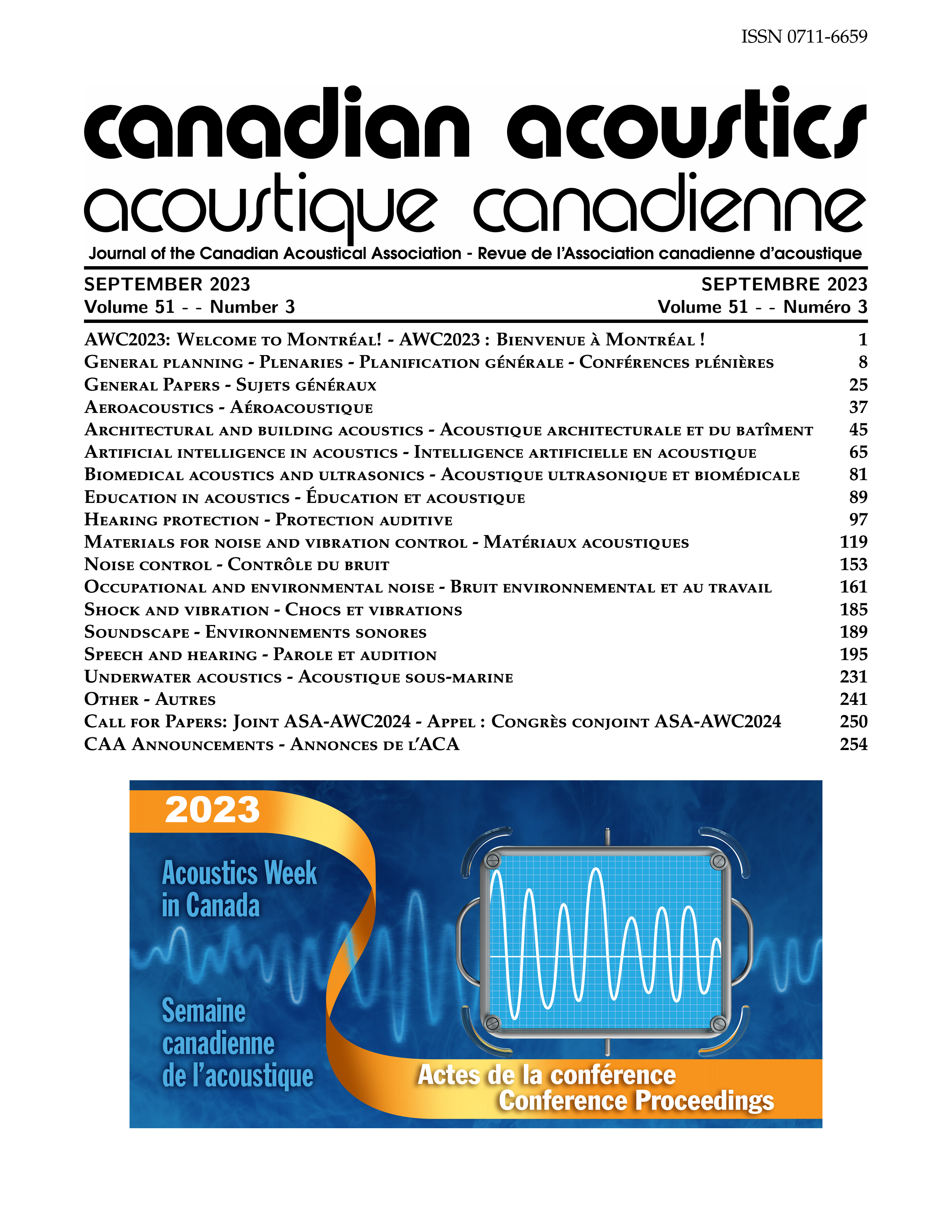Enhancing Environmental Noise Management Through Siamese Convolutional Neural Network with Triplet Lost Function for Identification of Principal Sound Sources
Abstract
Identifying principal noise sources in distant fields is a challenging task due to the convergence of multiple sound sources and the degradation of acoustic signals over distance. This task becomes critical in industrial environments, where adherence to noise regulations is mandatory. Conforming to noise regulations can result in decreased productivity or even necessitate cessation of operations, significantly impacting the industry and the surrounding communities. Our goal, in response to these issues, is to develop a tool to facilitate a highly refined analysis of the causality relationship between industrially produced noise and operational productivity. Our approach is characterized by the robust identification of dominant noise sources in complex soundscapes, with a focus on specific sound events rather than locations or equipment types. To achieve this, we utilize Siamese Convolutional Neural Networks (SCNNs) with a triplet loss function. In our methodology, near-field captures from noisy equipment are used as anchors. The anchors are compared with both positive and negative instances captured by environmental noise monitoring stations in distant sound fields. Positive instances refer to those where the sound event produced by the equipment under study dominates, while negative instances are those where the anchor sound is present but not dominant. Preliminary results are promising, indicating that it is possible to discern among various near-field captures to identify the primary contributor to the noise detected outside an industrial plant. With real-time identification and loop back as the next goals, this study paves the way for more advanced noise monitoring, presenting its potential significant role in shaping noise management strategies within industrial contexts.Additional Files
Published
How to Cite
Issue
Section
License
Author Licensing Addendum
This Licensing Addendum ("Addendum") is entered into between the undersigned Author(s) and Canadian Acoustics journal published by the Canadian Acoustical Association (hereinafter referred to as the "Publisher"). The Author(s) and the Publisher agree as follows:
-
Retained Rights: The Author(s) retain(s) the following rights:
- The right to reproduce, distribute, and publicly display the Work on the Author's personal website or the website of the Author's institution.
- The right to use the Work in the Author's teaching activities and presentations.
- The right to include the Work in a compilation for the Author's personal use, not for sale.
-
Grant of License: The Author(s) grant(s) to the Publisher a worldwide exclusive license to publish, reproduce, distribute, and display the Work in Canadian Acoustics and any other formats and media deemed appropriate by the Publisher.
-
Attribution: The Publisher agrees to include proper attribution to the Author(s) in all publications and reproductions of the Work.
-
No Conflict: This Addendum is intended to be in harmony with, and not in conflict with, the terms and conditions of the original agreement entered into between the Author(s) and the Publisher.
-
Copyright Clause: Copyright on articles is held by the Author(s). The corresponding Author has the right to grant on behalf of all Authors and does grant on behalf of all Authors, a worldwide exclusive license to the Publisher and its licensees in perpetuity, in all forms, formats, and media (whether known now or created in the future), including but not limited to the rights to publish, reproduce, distribute, display, store, translate, create adaptations, reprints, include within collections, and create summaries, extracts, and/or abstracts of the Contribution.


